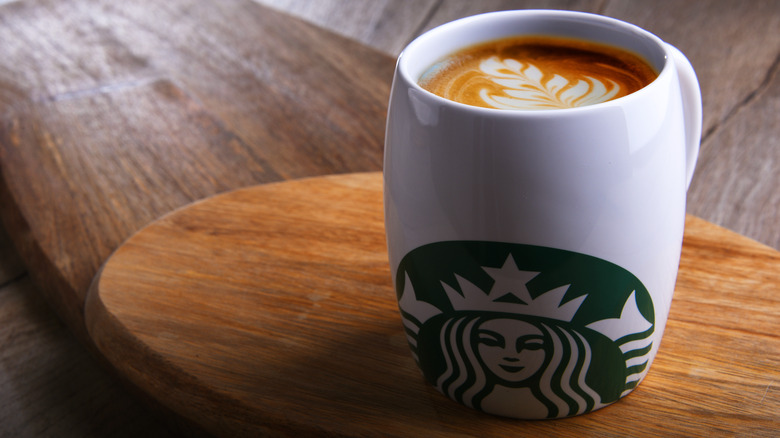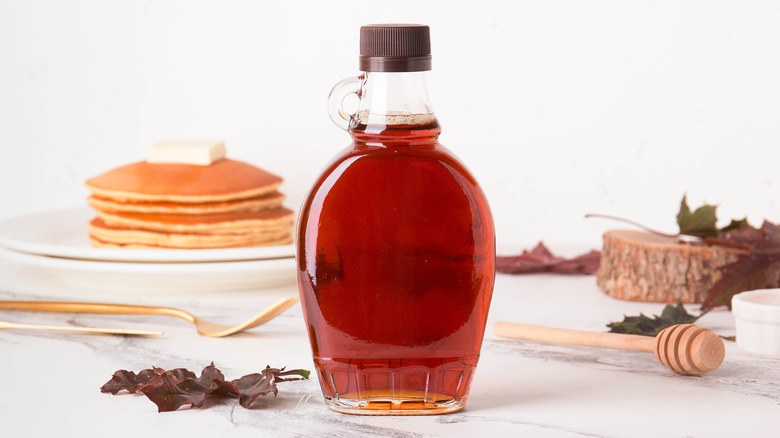The Maple-Kissed Drink That Was Featured At Starbucks In Canada
Mmm, maple! Candians go crazy for the sweet syrup, which shouldn't come as a surprise given that their flag bears a striking red maple leaf. A source of northern identity, the Government of Canada states that they produce about 75% of the world's syrup, with 92% "originating from Quebec." A favorite in confections like butter tarts and pouding chômeur, is it really a surprise that even the Starbucks in Canada adopted maple-kissed creations?
Clean yet complex, maple syrup is reminiscent of caramel, but with a nutty, almost woodsy quality that's unlike honey or a simple sugar syrup. Collected each frosty spring, (as Sugarbush explains) that sap is harvested using tapping systems. From there, it's transported to sugar shacks and boiled down until it reaches a thicker consistency that's more concentrated in flavor. Given that maple is integral to Canadian cuisine, it's common to find all sorts of maple-based goodies there, like syrups, butters, taffy, candies, water, and even potato chips (via Thrillist).
As an ingredient, maple is also pretty versatile as it can dress fluffy pancakes, reinvent Brussels sprouts, and even add some comfort to your morning coffee — which is exactly where Starbucks comes in.
The marvelous Maple Macchiato
Almost a decade ago, Grub Street reported that Canada had released a new drink, the Maple Macchiato, crafted with high quality syrup sourced from Quebec's Beauce-Appalache region. A take on the standard macchiato, Starbucks' maple-kissed beverage consisted of steamed milk, a shot of espresso, and a heavy-handed glug of pure maple syrup. While it had briefly been available in the U.S. a few years prior, consumer disinterest meant that the drink was taken off menus and introduced to our northern neighbors instead. Unfortunately, the maple macchiato was eventually discontinued in Canada as well for the same reason, according to Delish.
As for why Starbucks locations across the globe offer different drinks, the answer relies on market research. When the coffee company opens a store abroad, the chain tries to adapt to "local preferences," offering drinks that focus on regional flavors (per Day Translations). Naturally, this draws in foreign customers — it also inspires other Starbucks diehards to stop by when they're traveling.

